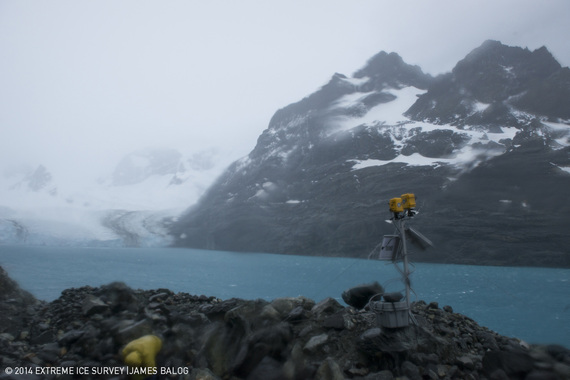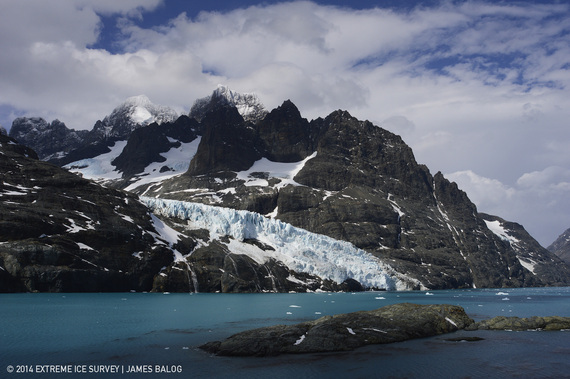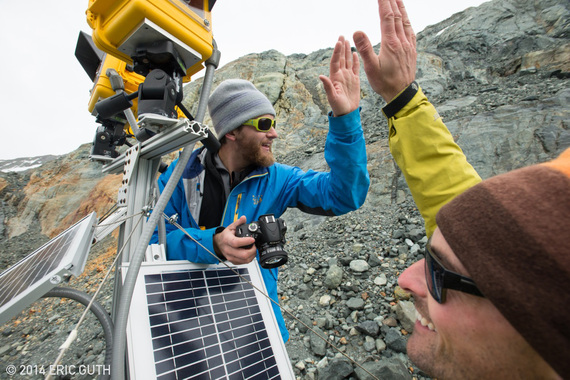Extreme Ice Survey, the team featured in the Emmy award-winning film Chasing Ice, is aboard our ship, the National Geographic Explorer, in Antarctica. They're installing time-lapse cameras that will shoot photos every hour of every day, creating visual records of these changing landscapes.
At the southern tip of South Georgia Island lies the six-mile-long Drygalski Fjord, a narrow split containing Risting Glacier and two of the Extreme Ice Survey time-lapse camera systems. Cold katabatic winds regularly race down from the high peaks above, epitomizing the weather for which South Georgia is famous. It is a definitive force and creates a veil of inaccessibility that extends to all visitors, time-lapse cameras included. Today we revisit the cameras we installed just nine short months ago. The state of these two cameras could very well set the tone for what success to expect during the remainder of our three-week expedition. Anxiety and curiosity are scratching at our bones.
Water and electronics don't mix and during the installation at Drygalski it took three of us to hold a tarp down over the camera housings to deflect the sideways rain while the delicate electronics were secured in place. Waterlogged and cold, we left the cameras in a rush, our frozen fingers tightly crossed. Our seven-plus-year track record of collecting time-lapse images has prepared us well, and we like to think that the hardware and electronics are durable enough for the most extreme environments on the planet.
The weather today is in stark contrast to last February. It's still windy, but the sun is peeking through high clouds and, at least for now, it isn't raining or snowing. Pulling away from the ship, our anxiety is lessened when we spot the two cameras upright, though, just as the rarity of a nice day at this latitude can be misleading, so too can be the sight of cameras still fixed in place. Either there will be images to recover, or we are looking at nothing more than an expensive and over-engineered bird perch.
We're elated to discover the solar panels secured in place, looking as if we had installed them only the day before, and the batteries at a healthy 14 volts. Things are looking good. We crack open the first camera housing, and quickly pull the camera out to check the image count. The excited voice of Lisa Kelley, the expedition leader for our journey, crackles over the VHF radio. Apparently she and the rest of the guests aboard National Geographic Explorer are also anxiously awaiting the outcome. We radio back to Lisa, trying to contain the surprised charge in our voices, "3,000 images, we have 3,000 images!"
Both cameras worked perfectly, and moreover, collected some of the most stunningly beautiful images we have ever captured to add to our archive--now more than one million photos strong.
It turns out that for fleeting moments between the seemingly constant rush of storms across the Southern Ocean, South Georgia Island can in fact brighten up and expose its splendor to the world, although it certainly helps having the patience of a time-lapse camera. And with a taste of success behind us, it's onward south, across the open sea, to the Antarctic Peninsula to check on and install more time-lapse cameras.
By Matthew Kennedy, Extreme Ice Survey



